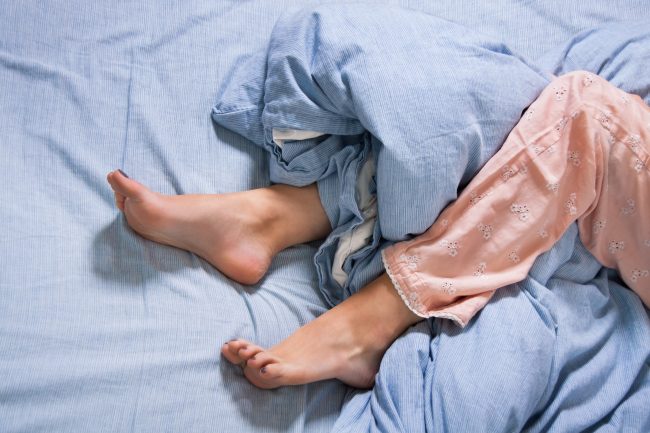With any change in routine comes a certain degree of stress and disruption. In millions of households, the annual back-to-school ritual of replacing worn backpacks, buying new fall clothes (kiddos grow so fast!) and realigning bedtime and drop-off schedules can surely lead to a few restless nights. So now you’re wondering how to fall asleep amidst the chaos. Fortunately, with the combination of autumn’s cooler temperatures, shorter days on the horizon and the innate desire to change with the seasons, you’ll be able to create an environment fit for snoozing.
Still shrugging off the seriousness of sleepless nights?
Learn the dark side of sleep deprivation
There’s more to fear than a case of grumpiness and fatigue after a bad night’s sleep. Evidence shows that prolonged fatigue and sleep loss may be linked to obesity, diabetes, depression and heart disease. When you’re tired, you make poor choices—from what to eat to how to solve a problem at work. That’s because chronic sleep deprivation can impair the parts of the brain that control memory, learning and basic daily function. The snowball effect is hazardous to your overall health.
Once you’ve come to terms with the fact you need more sleep, start thinking about how to fall asleep…
Make a dreamy space your reality
You already know to create a comfortable sleep environment in your bedroom (hint: no working in bed!). But a soothing paint color and self-adjusting mattress may not be enough of a transition for your brain to send sleepy-time signals to the rest of your body. A better way is to extend quiet time to the rest of the house by dimming lights about two hours before the first bedtime and powering down electronics at least half hour before you hit the hay. Evening screen time can disrupt melatonin production, a naturally occurring hormone that regulates the sleep cycle.
Now that you know how to fall asleep, make sure you look as rested as you feel.
Awaken the sleeping beauty
Cell renewal happens at night as your body works to overcome damage from everyday oxidation—that includes skin renewal. Melatonin acts as a natural antioxidant to help skin look refreshed and healthy. But as you age, production of melatonin starts to decline as does synthesis of collagen, the structural protein in skin. Give slumber – and your skin – a hand by taking a melatonin supplement 30 minutes before bedtime. To support collagen production, add a collagen supplement to your nighttime routine. Better yet, a combination formula with both collagen and melatonin can support healthy skin and sleep.*
Have a beautiful night!

